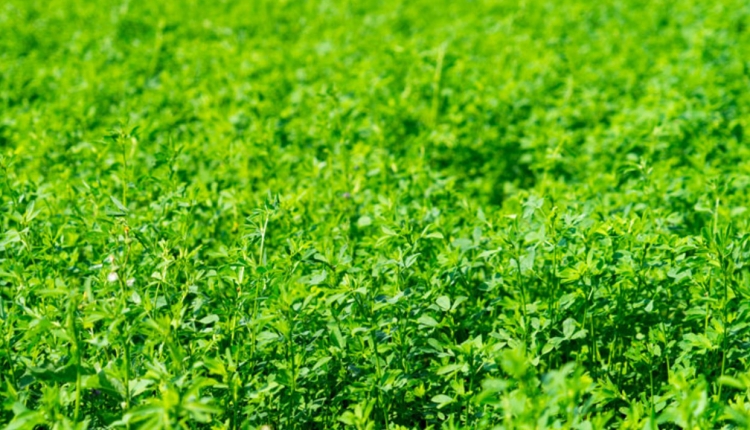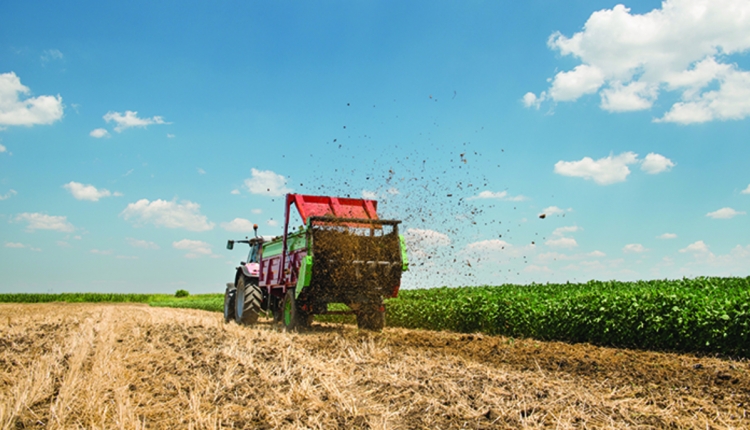The author is the Western North America director for IPNI, Merced, Calif.
Alfalfa is one of the most important crops grown in North America, with its market value ranked right behind corn and soybeans. Maintaining a high-quality alfalfa stand results in higher yields and enhanced quality forage. This requires a careful combination of plant nutrition, weed control, pest management, and harvesting skill.
Alfalfa places the highest demand on soil nutrient reserves of any of the commonly grown crops. Every ton of harvested alfalfa removes the fertilizer equivalent of approximately 12 pounds of P2O5 (phosphorus), 50 pounds of K2O (potassium), and 5 pounds each of Mg (magnesium) and of S (sulfur).
In addition to supporting the growth of high yields of hay, there are several less obvious benefits to maintaining adequate supplies of soil nutrients.
Quality - Nutrient deficiency hurts more than alfalfa yield. For example, studies have demonstrated that an adequate K supply in the soil improves stand persistence and boosts the number of shoots per plant. An adequate K supply also increases the number and the activity of rhizobia bacteria, a prerequisite for a healthy N fixation symbiosis. Leaf drop from the alfalfa plants also is minimized with adequate K, resulting in a better leaf-to-stem ratio and higher-quality animal feed.
Adequate P in the soil has been shown to support higher nodule numbers and nodule health essential for protein production. Plant regrowth and recovery after cutting is more rapid with adequate P, compared with deficient P conditions.
Plant disease control - Attention to plant nutrition can also benefit alfalfa profitability in less obvious ways. Careful nutrient management can bring improved resistance to plant disease.
In many cases, K-deficient alfalfa is more susceptible to disease than when adequately fertilized. For example, alfalfa leaf spot is reduced with adequate K. Zinc deficiencies make alfalfa more susceptible to fungal diseases such as rhizoctonia and phytophthora. These two root rot diseases can cause major problems in alfalfa. Proper variety selection, water management, and attention to plant nutrition all work together to minimize root damage.
A key to maintaining high yields and healthy alfalfa stands includes providing an adequate nutrient supply. Soil analysis prior to establishing the stand is the best way to get young alfalfa off to a healthy start. Tissue testing in subsequent years is a good way to track nutrient trends over time and spot encroaching problems. There are well-established methods for testing alfalfa nutrient concentrations in the plant tissue. A newly developed test from the University of California to sample hay bales also shows considerable promise as an easy and convenient way to track nutrient sufficiency.
Proper plant nutrition is fundamental to successful alfalfa production. Use only those nutrients that are needed to achieve your production goals. Not all yield-robbing deficiencies are visible to the eye. Keep track of your nutrient use and select the right source and rate to protect your investment.
Click here to return to the Crops & Forages E-Sources
100925_627
Alfalfa is one of the most important crops grown in North America, with its market value ranked right behind corn and soybeans. Maintaining a high-quality alfalfa stand results in higher yields and enhanced quality forage. This requires a careful combination of plant nutrition, weed control, pest management, and harvesting skill.
Alfalfa places the highest demand on soil nutrient reserves of any of the commonly grown crops. Every ton of harvested alfalfa removes the fertilizer equivalent of approximately 12 pounds of P2O5 (phosphorus), 50 pounds of K2O (potassium), and 5 pounds each of Mg (magnesium) and of S (sulfur).
In addition to supporting the growth of high yields of hay, there are several less obvious benefits to maintaining adequate supplies of soil nutrients.
Quality - Nutrient deficiency hurts more than alfalfa yield. For example, studies have demonstrated that an adequate K supply in the soil improves stand persistence and boosts the number of shoots per plant. An adequate K supply also increases the number and the activity of rhizobia bacteria, a prerequisite for a healthy N fixation symbiosis. Leaf drop from the alfalfa plants also is minimized with adequate K, resulting in a better leaf-to-stem ratio and higher-quality animal feed.
Adequate P in the soil has been shown to support higher nodule numbers and nodule health essential for protein production. Plant regrowth and recovery after cutting is more rapid with adequate P, compared with deficient P conditions.
Plant disease control - Attention to plant nutrition can also benefit alfalfa profitability in less obvious ways. Careful nutrient management can bring improved resistance to plant disease.
In many cases, K-deficient alfalfa is more susceptible to disease than when adequately fertilized. For example, alfalfa leaf spot is reduced with adequate K. Zinc deficiencies make alfalfa more susceptible to fungal diseases such as rhizoctonia and phytophthora. These two root rot diseases can cause major problems in alfalfa. Proper variety selection, water management, and attention to plant nutrition all work together to minimize root damage.
A key to maintaining high yields and healthy alfalfa stands includes providing an adequate nutrient supply. Soil analysis prior to establishing the stand is the best way to get young alfalfa off to a healthy start. Tissue testing in subsequent years is a good way to track nutrient trends over time and spot encroaching problems. There are well-established methods for testing alfalfa nutrient concentrations in the plant tissue. A newly developed test from the University of California to sample hay bales also shows considerable promise as an easy and convenient way to track nutrient sufficiency.
Proper plant nutrition is fundamental to successful alfalfa production. Use only those nutrients that are needed to achieve your production goals. Not all yield-robbing deficiencies are visible to the eye. Keep track of your nutrient use and select the right source and rate to protect your investment.
100925_627











